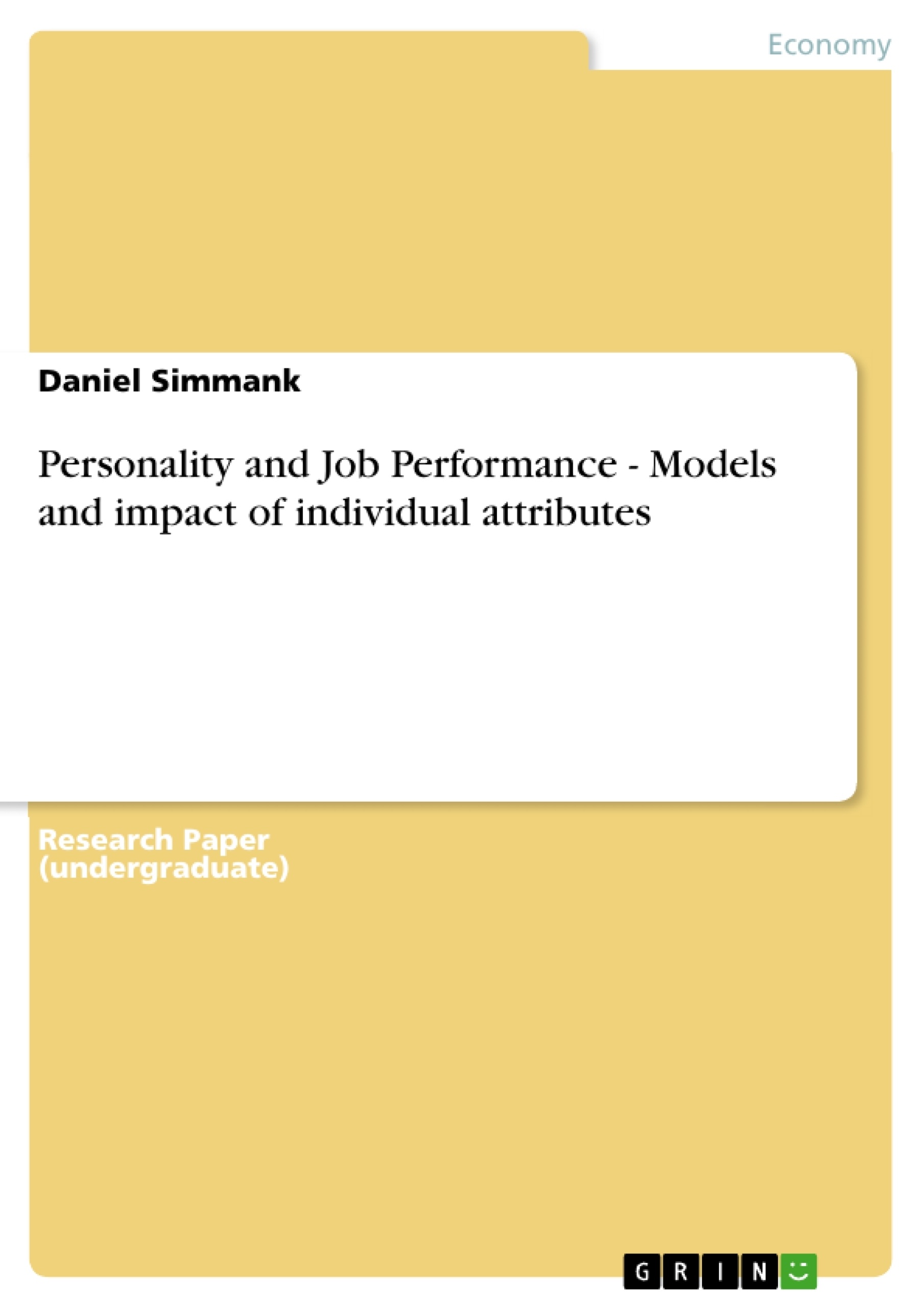Human resources are one of the most important assets of every company. Because of this it is very important to use them most efficiently. It was discovered, that different personalities do in fact have an impact on work performance, however, their influence could not satisfyingly be quantified. Personality was described as being the most basic part of the individual differences humans feature. The different personalities were discovered as being influential on a person’s productivity when it comes to employee selection and motivation.
In the following, two very often used models were presented. Both models try to group different personality-attributes and are the result of wide and sophisticated empirical research. They are not without criticism though, as they both have problems with replication. The 16PF was criticised as having problems with intercorrelation and it also features a value that contradicts the definition of personality used in this assignment. Because of this, the FFM was used as basis for further research. The FFM is part of the FFT, which was developed by McCrae & Costa and is a very widely accepted theory on how human personality affects decisions and human behaviour. Furthermore it is stated in the FFT, that the factors of the FFM are merely basic tendencies and as such cannot be measured directly and accurately. This is a very important part to remember when working with personality-tests – this is no exact science. Their results should not be seen as absolute truth, as they are susceptible to manipulation and the determination-methods for the factors are debatable. The FFT is also subject to criticism, as the factors appear to have been selected randomly. It was also stated, that their definition might not be narrow enough, which makes predictions inaccurate. The disadvantages of the FFT still weigh less than those of the 16PF, which is why the FFT was the model of choice in this assignment.
After the decision for a model was made, the factors of the FFT were being researched sequentially. It was discovered, that no single value for any specific factor is to be seen as being perfect, as every value has its advantages and disadvantages. Furthermore, the factors should not be observed reclusively, as the personality is a very complex and extensive system.
Inhaltsverzeichnis (Table of Contents)
- Introduction
- Theory
- Personality
- Job Performance
- Personality Models
- The Sixteen Personality Factor Questionnaire
- Five Factor Model
- Individual Attributes
- Classifying Individual Attributes
- Impact on Job Performance
- Summary and Conclusion
Zielsetzung und Themenschwerpunkte (Objectives and Key Themes)
This paper aims to explore the relationship between personality and job performance. It delves into the theoretical foundations of personality, examines different personality models, and analyzes the impact of individual attributes on job success.
- The role of personality in job performance
- Different personality models and their applications
- The influence of individual attributes on work outcomes
- The importance of understanding individual differences in the workplace
- The implications of personality for leadership and organizational effectiveness
Zusammenfassung der Kapitel (Chapter Summaries)
- Introduction: This chapter provides an overview of the topic, outlining the importance of understanding personality in the context of work and highlighting the key questions addressed in the paper.
- Theory: This chapter presents a theoretical framework for understanding personality and its relationship to job performance. It defines key concepts such as personality traits, individual differences, and the role of personality in organizational behavior.
- Personality Models: This chapter explores different personality models, focusing on the Sixteen Personality Factor Questionnaire (16PF) and the Five Factor Model (FFM). It analyzes their strengths and weaknesses, and discusses their implications for understanding individual differences.
- Individual Attributes: This chapter delves into the specific impact of individual attributes on job performance. It discusses how different personality traits can influence various aspects of work, including motivation, leadership, teamwork, and job satisfaction.
Schlüsselwörter (Keywords)
The key concepts explored in this paper include personality, job performance, personality models, individual attributes, and the impact of individual differences on work outcomes. Specific models and theories such as the Sixteen Personality Factor Questionnaire (16PF) and the Five Factor Model (FFM) are also central to the analysis.
- Quote paper
- B.Sc. Daniel Simmank (Author), 2013, Personality and Job Performance - Models and impact of individual attributes, Munich, GRIN Verlag, https://www.grin.com/document/211759



